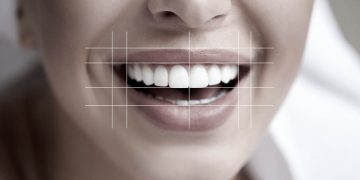Artificial Intelligence (AI) is rapidly transforming many sectors, and healthcare is no exception. In recent years, the field of dentistry has embraced AI technologies to enhance the precision of diagnoses, streamline treatment plans, and ultimately improve patient care. From detecting early signs of dental issues to assisting in the creation of personalized treatment plans, AI is changing how dental professionals approach patient care.
This article explores the various ways AI is being used to improve dental diagnosis and treatment, offering insight into the future of dentistry and how AI is contributing to better outcomes for patients.
1. AI-Assisted Diagnosis: Early Detection of Dental Issues
One of the most significant applications of AI in dentistry is in the area of diagnosis. AI algorithms are now being trained to identify various dental conditions, often with a level of accuracy comparable to that of experienced dental professionals. Early diagnosis is critical in dentistry, as many oral health issues are easier to treat when detected early.
a. Detection of Cavities and Tooth Decay
AI-powered tools can assist in the detection of cavities and tooth decay, even in their earliest stages. Traditional dental X-rays often require the clinician to manually review images and make subjective judgments about the presence of dental caries. However, AI algorithms can analyze X-ray images or digital scans and highlight areas of concern, such as tiny cavities or areas where decay is beginning to form. By detecting these issues early, dentists can provide more conservative treatments and help prevent further damage.
AI models use advanced image recognition techniques to identify subtle patterns in the data, making it possible to catch issues that might be missed by the human eye. This capability can be especially valuable in routine checkups, where early intervention can save both time and money for patients.
b. Identifying Gum Disease and Periodontal Issues
Periodontal disease is another common condition that AI is helping to diagnose with greater precision. Traditional methods of diagnosing gum disease typically involve visual inspections and probing, which can sometimes lead to underestimating the severity of the problem. AI-powered tools can analyze 3D scans of a patient’s gums and bone structure, detecting early signs of gum disease, bone loss, and inflammation.
By reviewing these scans, AI systems can flag areas with potential issues, allowing dentists to identify problems such as gingivitis or periodontitis earlier than with traditional methods. Early detection means that treatment can begin sooner, preventing the disease from progressing to more severe stages that could require invasive procedures.
c. Diagnosing Oral Cancer
Oral cancer is another area where AI is making significant strides. Traditional methods of detecting oral cancer involve physical examinations and biopsies, which may not always provide early-stage detection. However, AI algorithms have been developed to analyze images from intraoral cameras, biopsies, and scans to identify abnormal tissue growth or lesions that may indicate early signs of oral cancer.
AI tools are able to recognize subtle changes in the texture and shape of tissue that may go unnoticed by the human eye. This allows for earlier intervention and treatment, which is crucial for improving the chances of successful recovery from oral cancer.
2. AI in Treatment Planning: Personalized and Precise Care
AI doesn’t just assist with diagnosing dental conditions — it is also transforming the way treatment plans are developed. With AI, dental professionals can now create highly personalized treatment plans based on a patient’s unique needs, anatomy, and medical history.
a. Predictive Analytics for Treatment Success
AI algorithms can analyze vast amounts of patient data, including clinical records, imaging scans, and treatment history, to predict the success of specific treatment plans. For example, AI can assess how well a particular patient might respond to orthodontic treatments like braces or clear aligners based on their bone structure, age, and other factors.
By providing insights into treatment outcomes, AI helps dentists make informed decisions about the best course of action for each patient. This reduces trial and error in treatment and leads to better, more predictable results.
b. Designing Custom Restorations and Implants
Another significant application of AI in treatment planning is the design of custom dental restorations, such as crowns, bridges, and implants. CAD/CAM (Computer-Aided Design/Computer-Aided Manufacturing) systems, powered by AI, have revolutionized how dental restorations are created. These systems can take digital impressions of a patient’s teeth and use AI algorithms to design highly accurate, custom-made restorations that fit perfectly.
AI can also help in the design of dental implants. By analyzing a patient’s unique bone structure and jaw anatomy, AI can assist in creating implants that are specifically tailored to the individual, improving the fit and long-term success of the procedure.
c. Optimizing Orthodontic Treatments
Orthodontics is another field where AI is making a major impact. AI-driven software helps orthodontists plan and monitor treatments with incredible precision. For example, AI can analyze 3D scans of a patient’s teeth and predict how the teeth will move over time with various orthodontic treatments, such as braces or clear aligners.
Additionally, AI algorithms can help design customized orthodontic appliances that provide a better fit and improved treatment outcomes. By predicting how a patient’s teeth will respond to treatment, AI allows for more efficient planning and better alignment results in less time.
3. AI in Patient Monitoring and Post-Treatment Care
AI also plays a vital role in monitoring patients during and after dental procedures, ensuring that recovery is progressing as expected and helping to manage potential complications.
a. Remote Monitoring of Dental Health
Telemedicine and AI-enabled remote monitoring have become particularly important in recent years, especially with the rise of virtual consultations. Patients who have undergone dental procedures such as implants or orthodontic treatments can use AI-powered apps or wearable devices to track their recovery and receive guidance from their dental providers without needing to visit the office in person.
For example, patients with braces or clear aligners can upload pictures or 3D scans of their teeth through an app, and AI can analyze the data to assess whether the teeth are moving as expected. If there are any concerns, the dentist can be alerted in real time, allowing for quick intervention if necessary.
b. AI in Managing Pain and Discomfort
AI-driven tools are also being used to monitor a patient’s pain levels and comfort after dental procedures. By analyzing data from sensors or patient feedback, AI can adjust pain management strategies, ensuring that the patient is comfortable throughout their recovery process. This could involve recommending over-the-counter medications, guiding the patient through exercises to reduce discomfort, or alerting the dental office if additional intervention is required.

4. AI and Workflow Efficiency: Enhancing Practice Management
Beyond patient care, AI is also improving the efficiency of dental practice management. By automating routine administrative tasks and improving patient communication, AI is enabling dental professionals to focus more on clinical care.
a. Automating Appointment Scheduling and Reminders
AI-driven scheduling systems can automate appointment booking, rescheduling, and reminders. These systems can predict the most optimal times for patient visits based on availability and patient preferences, reducing wait times and improving office efficiency. Additionally, automated reminders can help reduce missed appointments, improving the overall flow of the practice.
b. AI in Administrative Tasks and Billing
AI can also streamline administrative tasks, such as billing and insurance claims processing. By analyzing patient records and treatment plans, AI can generate accurate billing statements and submit insurance claims automatically. This not only saves time but also reduces the risk of human error in paperwork, ensuring that the practice is reimbursed promptly for services rendered.
5. Future Potential of AI in Dentistry
While AI in dentistry has already made significant strides, the future potential is even more promising. Continued advancements in machine learning, robotics, and data analytics are expected to take dental diagnosis and treatment to the next level.
- AI-powered robotic surgeries: In the future, AI may assist in performing robotic dental surgeries, allowing for even greater precision during complex procedures like implant placement.
- Real-time AI diagnostics: AI may evolve to offer real-time diagnostics, providing dentists with instant feedback on conditions as they examine a patient, helping with quicker decision-making and treatment.
- AI in preventative care: With further development, AI may be able to predict future dental problems based on a patient’s medical and dental history, allowing for more proactive, preventative care.
Conclusion
Artificial intelligence is reshaping the landscape of modern dentistry by improving the accuracy of diagnoses, enhancing treatment planning, streamlining practice management, and providing better patient outcomes. As AI technology continues to advance, it will play an increasingly central role in the way dental professionals diagnose, treat, and care for their patients.
By leveraging the power of AI, dentists can provide more precise, personalized care, improving the overall dental experience for patients. The future of dentistry looks brighter than ever, and AI will undoubtedly continue to drive innovations that make dental care more efficient, effective, and accessible.













































Discussion about this post